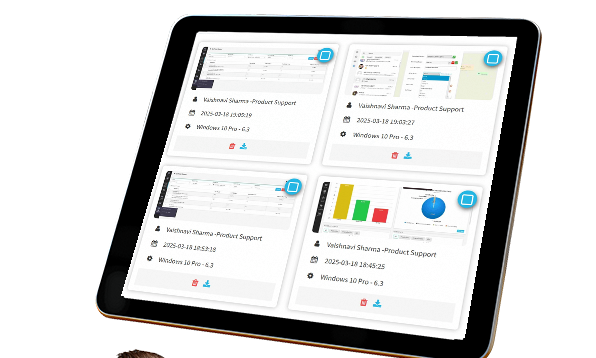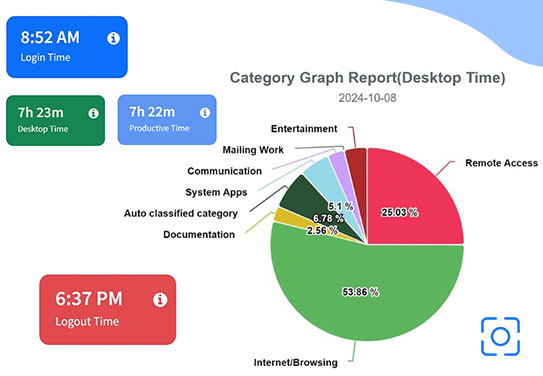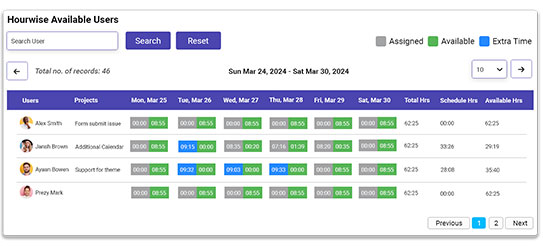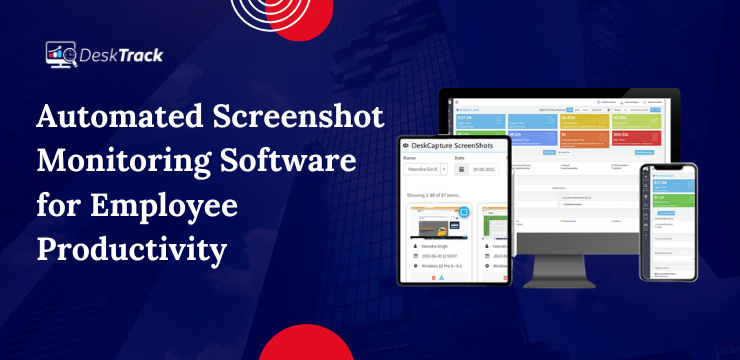Effective Employee Productivity Trackers for Enhanced Workplace Performance
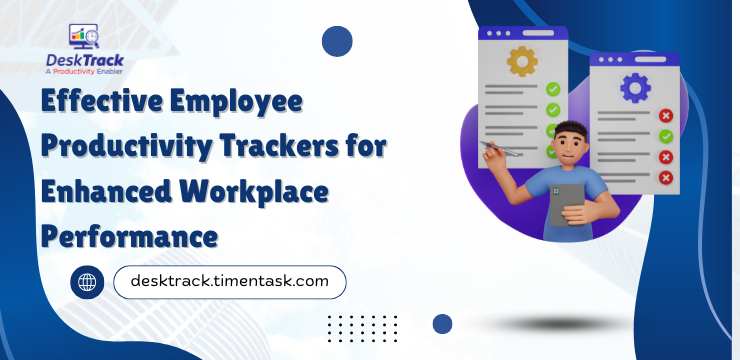
In today’s competitive and fast-paced business environment, organizations are continually seeking ways to boost employee productivity and optimize workflows. Employee productivity trackers have become essential tools for helping businesses measure, monitor, and improve employee performance. These tools allow managers to identify inefficiencies, allocate resources effectively, and provide employees with the insights they need to stay focused on high-value tasks. Whether you are managing a remote workforce or in-office teams, using effective productivity trackers can lead to enhanced workplace performance and overall business success.
This article explores the importance of employee productivity tracking, the types of trackers available, and how they can improve both individual and team performance within your organization.
Why Employee Productivity Trackers Matter
Effective productivity tracking is more than just monitoring work hours; it is about understanding how employees allocate their time, identify roadblocks, and streamline operations for better results. Here’s why productivity trackers matter in the modern workplace:
Read More: Enterprise Employee Scheduling Software
Performance Visibility: Tracking employee productivity provides clear insights into individual and team performance. By monitoring tasks, work output, and time spent, businesses can gauge whether their employees are meeting expectations and staying on track.
Improved Time Management: Many employees struggle with time management, often getting distracted by non-work-related activities or feeling overwhelmed by competing priorities. A productivity tracker can highlight where time is being spent, enabling employees to adjust and focus on high-priority tasks.
Resource Optimization: By using productivity tracking tools, organizations can assess the efficiency of their teams and adjust resource allocation accordingly. Whether through balancing workloads, hiring additional staff, or reallocating projects, productivity trackers provide data to inform these decisions.
Goal Setting and Achievement: Productivity trackers often include goal-setting features that help employees and teams set measurable objectives. These tools enable businesses to track progress, ensuring that employees remain focused on the most important tasks to achieve both short-term and long-term goals.
Improve employee engagement and Accountability: A well-implemented productivity tracker encourages employees to take ownership of their work and be accountable for their performance. It can also help improve engagement by providing employees with feedback, recognition, and areas for improvement.
Types of Effective Employee Productivity Trackers
There are various types of productivity trackers available, each designed to serve different needs. Below are the most effective types of trackers that businesses can implement for enhanced workplace performance:
1. Time Tracking Software
Time tracking software is one of the most widely used types of productivity tracking tools. These tools automatically track the time employees spend on specific tasks, projects, or activities. They allow businesses to measure how effectively time is used and identify areas where time may be wasted. Some time tracking software includes features like:
Task Categorization: Time tracking software often categorizes time spent on different tasks or projects, making it easy to track the allocation of time across multiple responsibilities.
Breakdown of Billable vs. Non-Billable Hours: Many businesses, especially in service industries, need to track both billable and non-billable hours. Time tracking software helps differentiate between these to ensure accurate billing and project management.
Automatic Time Logging: Many time tracking tools automatically log the time when employees start or stop tasks, reducing the chances of manual errors or time entry inconsistencies.
Popular time-tracking software includes tools like Toggl Track, Clockify, and Harvest, which are especially useful for freelance workers, remote teams, and businesses with project-based work.
2. Activity and Behavior Monitoring Tools
Activity monitoring tools are more advanced than basic time-tracking software. These tools track how employees spend their time on different applications, websites, and tools throughout the day. They offer more granular insights into productivity, helping managers pinpoint distractions and assess how time is spent. These tools are often used for:
Monitoring App and Website Usage: They track which websites and applications employees are using during work hours, categorizing them as productive, neutral, or unproductive.
Detecting Time-Wasting Behavior: By tracking the time spent on non-work-related sites or apps, managers can identify potential distractions and offer interventions to keep employees on task.
Real-Time Activity Monitoring: These tools offer real-time insights into employee activities, allowing managers to monitor performance as it happens and intervene when necessary.
Examples of popular activity monitoring software include Hubstaff, Time Doctor, and ActivTrak. These tools are particularly effective in remote work settings where it can be challenging to maintain visibility into employees' day-to-day activities.
3. Project and Task Management Tools
Project management tools are essential for tracking employee productivity, particularly when it comes to collaborative work. These tools help manage workflows, assign tasks, set deadlines, and monitor progress. They enable managers to track not only how much time employees spend on tasks but also the quality and timeliness of the work.
Features of project management tools may include:
Task Assignment and Prioritization: Managers can assign tasks to specific team members, set deadlines, and prioritize work based on urgency and importance.
Project Milestones and Tracking: These tools help track project milestones, ensuring that teams stay on track and meet deadlines.
Collaboration and Communication: Many project management tools come with built-in messaging and file-sharing features, which enhance communication between team members and improve collaboration.
Popular project management tools that include productivity tracking features are Asana, Trello, Monday.com, and ClickUp. These tools offer a high level of customization and scalability, making them suitable for teams of all sizes.
4. Employee Engagement and Feedback Tools
Employee engagement and feedback tools are designed to track how employees feel about their work environment and job responsibilities. These tools provide valuable insights into employee motivation, job satisfaction, and performance. They can help businesses identify potential issues that may be affecting productivity, such as burnout, lack of motivation, or communication barriers.
Some key features of employee engagement tools include:
Surveys and Polls: Businesses can use surveys to gather feedback on employee satisfaction, engagement levels, and work-life balance.
Pulse Surveys: These short, frequent surveys are designed to measure employee sentiment and identify potential issues in real-time.
Recognition and Rewards: Many engagement tools allow for employee recognition and reward systems that encourage positive behavior and enhance workplace morale.
Examples of employee engagement tools include 15Five, Officevibe, and Culture Amp. These tools not only track productivity but also foster a positive workplace culture by addressing employee well-being.
5. Goal-Setting and Performance Tracking Software
Goal-setting tools help employees and teams set measurable and achievable objectives, aligning individual tasks with broader organizational goals. These tools track progress toward goals and offer performance metrics to measure achievement. Many businesses use these tools to ensure that employees are focused on the right objectives and to help them stay motivated to achieve success.
Read More: Employee Monitoring Solution Market
Key features of goal-setting tools include:
OKRs (Objectives and Key Results): This goal-setting framework helps employees break down large goals into measurable results.
Performance Dashboards: Dashboards provide a real-time view of an employee's progress toward their goals, making it easier to track performance over time.
Continuous Feedback: Many goal-setting tools provide ongoing feedback to help employees stay on track and make adjustments to their work as needed.
Some examples of goal-setting and performance-tracking software include Weekdone, Gtmhub, and 15Five. These tools help businesses track both individual and team performance, ensuring that everyone is aligned with organizational objectives.
Conclusion
Employee productivity trackers are invaluable tools that help businesses understand how their workforce is performing, where inefficiencies lie, and how to optimize workflows for better outcomes. Whether it’s time tracking, activity monitoring, project management software, or employee engagement tools, there is a wide range of software options available to meet specific organizational needs.
By leveraging these tools, businesses can not only enhance productivity but also foster a more engaged, motivated, and high-performing workforce. Productivity trackers provide actionable insights that lead to improved resource allocation, smarter decision-making, and ultimately, a more successful and efficient workplace. When used correctly, these tools enable organizations to boost employee performance, enhance collaboration, and achieve their strategic goals.
Note: IndiBlogHub features both user-submitted and editorial content. We do not verify third-party contributions. Read our Disclaimer and Privacy Policyfor details.



